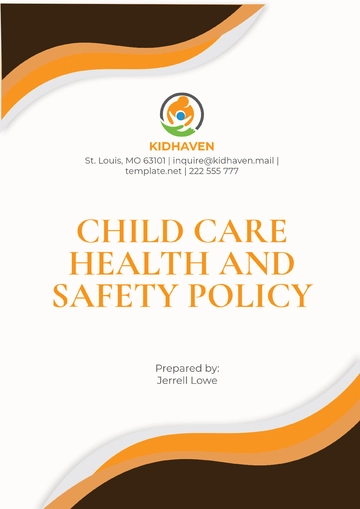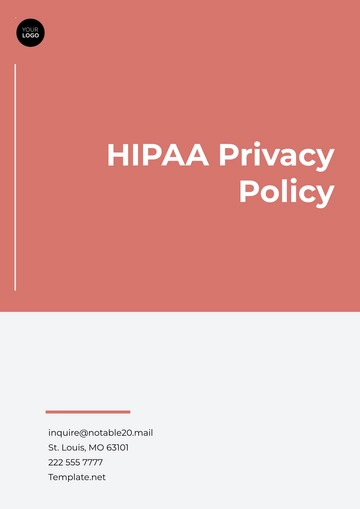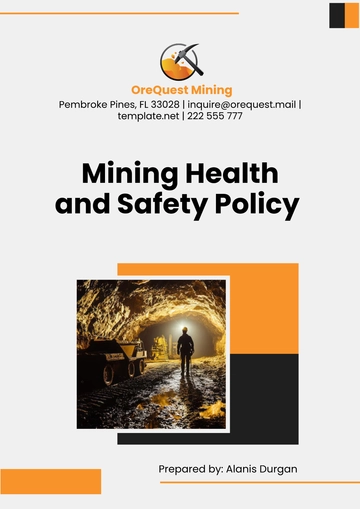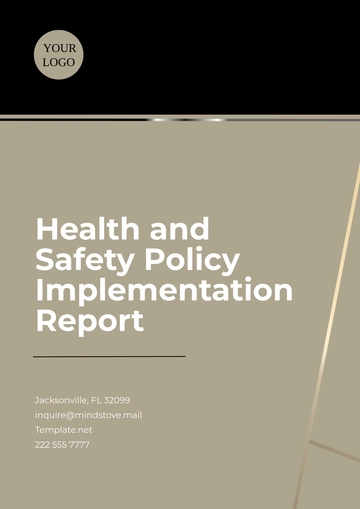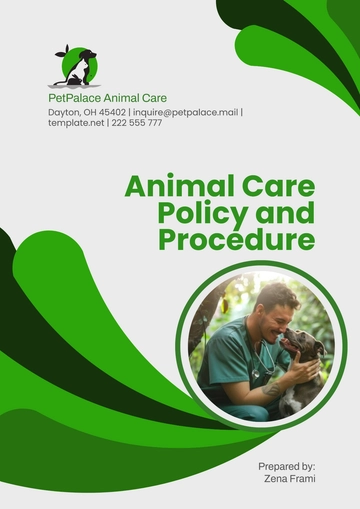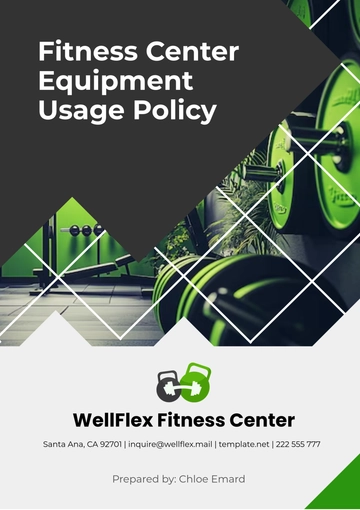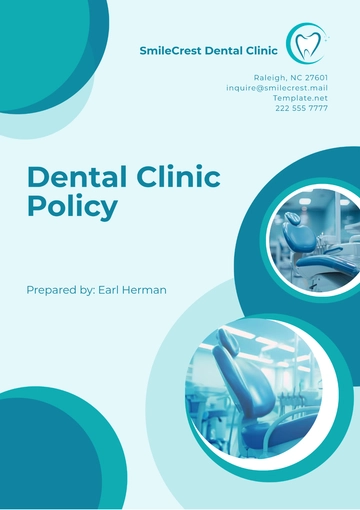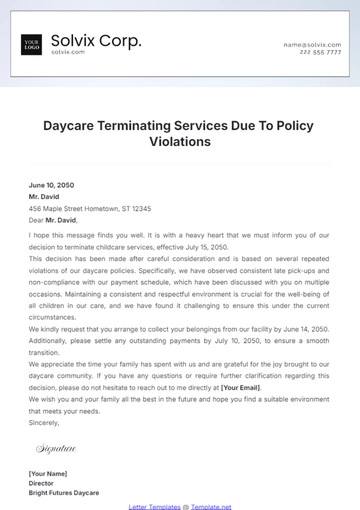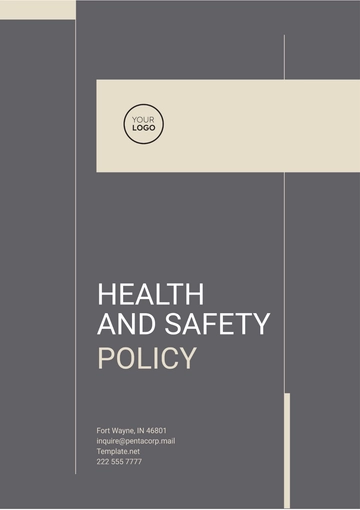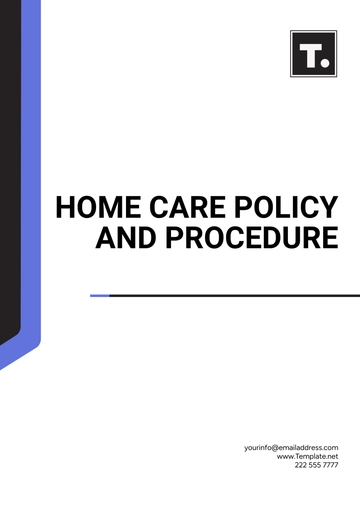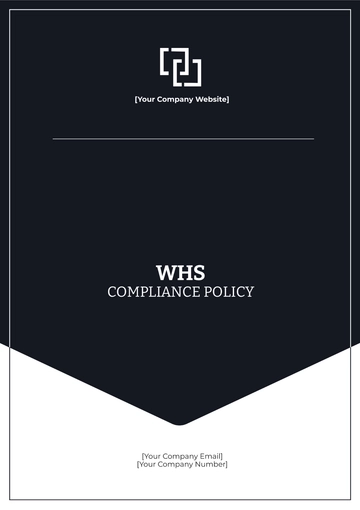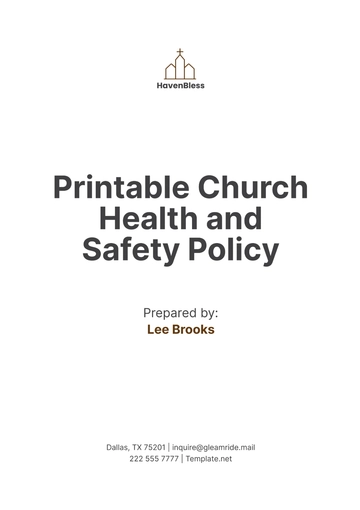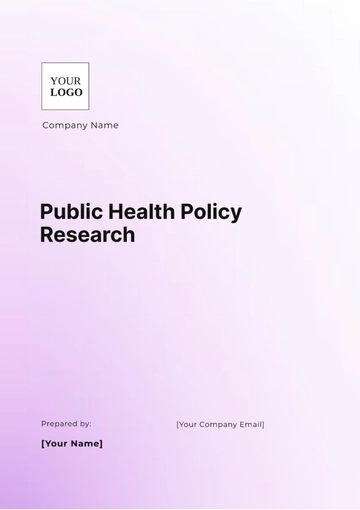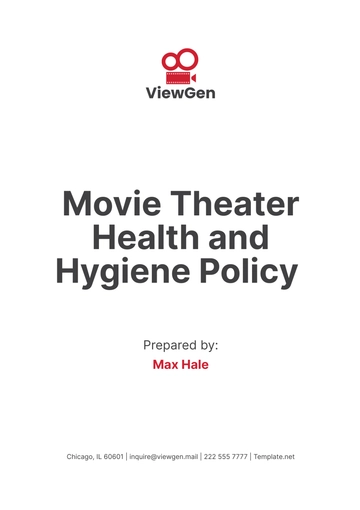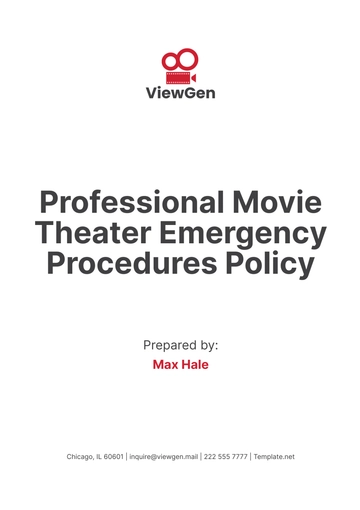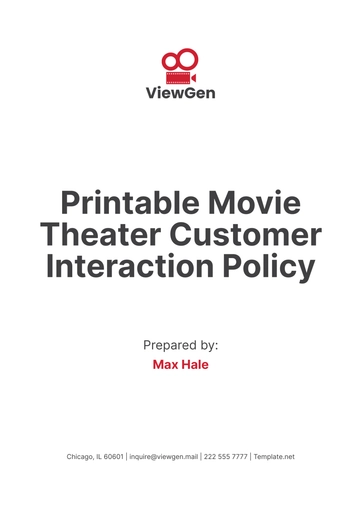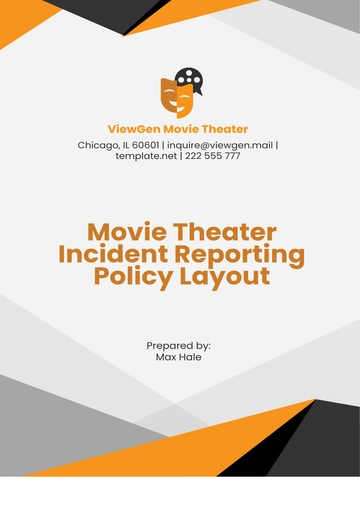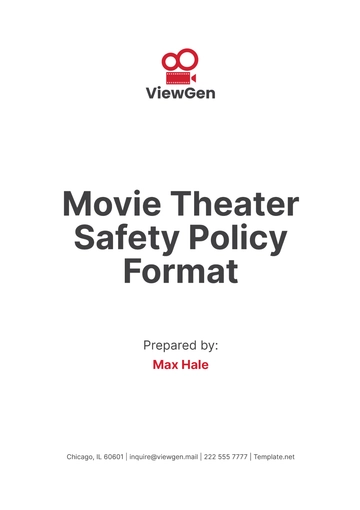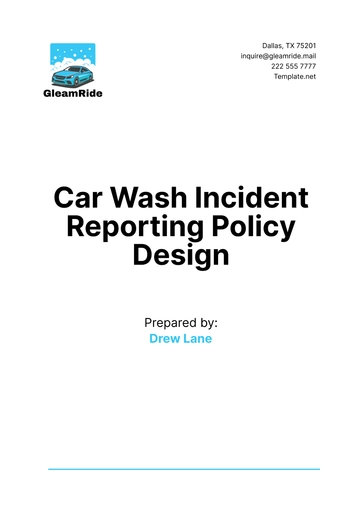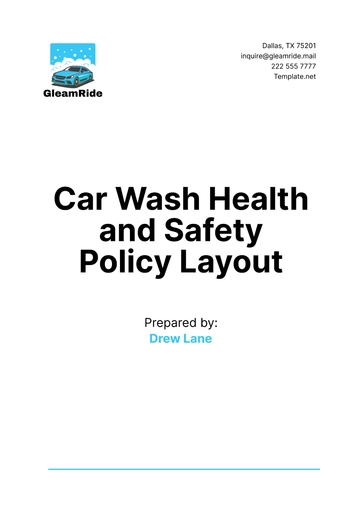Free Nursing Home Procedure Policy

I. Introduction
At [Your Company Name], we are committed to providing high-quality care and ensuring the safety, well-being, and dignity of our residents. This Nursing Home Procedure Policy serves as a comprehensive guide for staff members, outlining the standard procedures that govern our operations to maintain consistency, compliance, and excellence in care delivery. Our commitment to continuous improvement and adherence to best practices underscores our dedication to meeting the evolving needs of our residents and exceeding regulatory requirements.
II. Admission Procedures
Criteria for Admission
Admission to [Your Company Name] is based on an assessment of the individual's medical needs, cognitive abilities, and compatibility with our facility's resources and services. We consider factors such as the resident's medical history, functional status, social support network, and financial resources when determining eligibility for admission. Our admissions team conducts a thorough review of each prospective resident's medical records, including diagnostic tests, treatment plans, and medication regimens, to ensure that we can meet their needs effectively and provide the appropriate level of care.
Admission Process
Prospective residents undergo a comprehensive assessment conducted by our admissions team, which includes a review of medical records, completion of necessary forms and consents, and coordination with the resident's healthcare providers. Our admissions coordinator serves as the primary point of contact for prospective residents and their families, guiding them through the admission process with empathy, transparency, and professionalism. During the admission process, we prioritize open communication and collaboration with residents and their families to address any questions, concerns, or preferences they may have regarding their transition to our facility.
Transition Planning
Upon admission, we develop individualized transition plans to support residents in adjusting to their new living environment and routines. Our interdisciplinary team collaborates with residents, families, and community resources to ensure a seamless transition and continuity of care. We provide orientation sessions and informational materials to acquaint residents with our facility's amenities, services, policies, and procedures, fostering a sense of familiarity and comfort during their transition period.
III. Resident Care Protocols
Comprehensive Assessment
Upon admission, each resident undergoes a thorough assessment to identify their physical, cognitive, emotional, and social needs. This assessment informs the development of an individualized care plan tailored to the resident's preferences and goals. Our interdisciplinary team, including registered nurses, licensed practical nurses, certified nursing assistants, and therapists, collaborates to conduct ongoing assessments and updates to ensure the resident's changing needs are addressed promptly and effectively.
Care Planning and Goal Setting
Based on the comprehensive assessment, we develop individualized care plans that outline specific goals, interventions, and outcomes for each resident. Residents and their families actively participate in the care planning process, providing input on preferences, routines, and personal goals. Our care plans are dynamic documents that evolve with the resident's changing needs and preferences, with regular reassessments conducted to monitor progress, adjust interventions, and ensure alignment with the resident's goals and aspirations.
Coordination of Care
Our interdisciplinary team works collaboratively to coordinate care across disciplines and ensure holistic and integrated approaches to resident care. We utilize regular care conferences, interdisciplinary rounds, and communication tools to facilitate information sharing, care coordination, and collaboration among team members. Residents and their families are valued partners in the care coordination process, with opportunities provided for ongoing communication, feedback, and shared decision-making to promote resident-centered care and continuity of care transitions.
IV. Safety Protocols
Environmental Safety Measures
We implement environmental safety measures to minimize hazards and promote a safe living environment for residents. This includes regular maintenance of facilities, equipment, and grounds to address any potential safety risks promptly. Our facility conducts routine inspections and assessments of the physical environment, including lighting, flooring, and furniture, to identify and mitigate potential fall hazards and other safety concerns.
Staff Training on Emergency Response
Our staff undergo regular training on emergency response procedures to ensure readiness in the event of medical emergencies, natural disasters, or other crisis situations. Training includes techniques for emergency evacuation, first aid, cardiopulmonary resuscitation (CPR), and use of emergency response equipment. We conduct regular drills and simulations to reinforce staff competency and preparedness, with debriefing sessions held afterward to identify areas for improvement and reinforce best practices.
Prevention of Healthcare-Associated Infections (HAI)
In addition to infection control measures, we implement strategies to prevent healthcare-associated infections (HAI) among residents. This includes promoting hand hygiene practices among staff, residents, and visitors, implementing protocols for proper cleaning and disinfection of equipment and common areas, and monitoring for signs of infection among residents. Our infection control team conducts regular surveillance of HAI rates, implements evidence-based interventions to reduce infection risks, and provides ongoing education and training to staff on infection prevention practices.
Fall Prevention Programs
We have developed comprehensive fall prevention programs to reduce the risk of falls among residents, particularly those at higher risk due to age, mobility limitations, or cognitive impairment. These programs include multifactorial assessments to identify individual fall risk factors, personalized interventions such as exercise programs, assistive devices, and environmental modifications, and ongoing monitoring and reassessment to evaluate the effectiveness of interventions. Our interdisciplinary team collaborates to develop and implement fall prevention strategies tailored to each resident's unique needs and preferences, with a focus on maintaining resident independence and quality of life.
V. Staff Training and Supervision
Continuous Education and Development
We provide ongoing opportunities for staff education and development to enhance their knowledge, skills, and competencies in resident care, safety protocols, and regulatory compliance. This includes participation in continuing education programs, in-service training sessions, and certification courses relevant to their roles and responsibilities. Our facility encourages staff members to pursue professional growth opportunities, such as advanced certifications or specialized training in areas of interest or expertise, to support career advancement and enhance the quality of care provided to residents.
Mentorship and Peer Support
We foster a culture of mentorship and peer support among staff members to facilitate learning, collaboration, and professional growth. Experienced staff members serve as mentors and role models for newer employees, providing guidance, feedback, and support as they navigate their roles and responsibilities. Peer support networks are established to encourage communication, teamwork, and mutual assistance among staff members, with opportunities for informal mentorship, problem-solving, and knowledge sharing.
Supervision and Performance Management
Our facility prioritizes effective supervision and performance management practices to ensure staff accountability, adherence to policies and procedures, and delivery of high-quality care. Nursing supervisors and managers provide regular oversight and direction to staff members, conducting performance evaluations, setting performance goals, and providing constructive feedback and coaching. We maintain open lines of communication between staff and leadership, with mechanisms in place for staff members to voice concerns, seek guidance, and provide input on facility practices and policies.
Recognition and Reward Programs
We recognize and reward staff members for their contributions, dedication, and commitment to excellence in resident care and service. Our facility has established recognition programs to acknowledge staff achievements, such as employee of the month awards, performance-based bonuses, and milestone celebrations. We also encourage staff participation in quality improvement initiatives and innovation projects, providing opportunities for professional recognition and advancement.
VI. Communication Protocols
Interdisciplinary Care Conferences
We conduct regular interdisciplinary care conferences to facilitate communication, collaboration, and shared decision-making among staff members, residents, families, and healthcare providers. These conferences provide a forum for discussing resident care plans, progress, and goals, as well as addressing any concerns or challenges that arise. Residents and their families are invited to participate in care conferences to ensure their voices are heard, preferences are considered, and goals are aligned with their wishes and expectations.
Family Communication and Engagement
We maintain open lines of communication with residents' families to keep them informed about their loved one's care, status, and progress. Our facility provides regular updates and reports on resident well-being, changes in condition, and care plans, with opportunities for family members to ask questions, provide input, and participate in decision-making processes. We encourage family involvement in resident activities, events, and outings, fostering a sense of community and partnership between residents, families, and staff.
Documentation and Information Sharing
Accurate and timely documentation of resident information, care plans, interventions, and communication is essential for ensuring continuity of care and promoting resident safety and well-being. Our facility utilizes electronic health records (EHR) systems with standardized documentation templates, protocols, and safeguards to ensure consistency, accuracy, and confidentiality in documentation practices. Staff members receive training on documentation requirements, including documentation of resident assessments, care provided, and response to interventions, with regular audits conducted to monitor compliance and identify areas for improvement.
Resolution of Concerns and Grievances
We have established processes for addressing resident and family concerns, complaints, and grievances in a timely, respectful, and compassionate manner. Our facility encourages open communication and transparency in resolving issues, with designated staff members available to listen to concerns, investigate complaints, and facilitate resolution. Residents and families are provided with information about their rights, including the right to voice concerns and seek resolution without fear of retaliation, and are supported in advocating for their needs and preferences throughout the grievance process.
VII. Resident Rights and Responsibilities
Privacy and Dignity
We uphold the rights of residents to privacy, dignity, and respect in all aspects of care and interaction within the facility. Residents have the right to confidentiality of their personal information, freedom from physical or emotional abuse, and autonomy in making decisions about their care and daily routines. Our facility promotes a culture of respect and sensitivity to residents' individual preferences, cultural beliefs, and personal boundaries, with policies and procedures in place to safeguard their privacy and dignity.
Autonomy and Choice
Residents have the right to make choices about their daily activities, routines, and preferences, consistent with their abilities and preferences. Our facility supports resident autonomy and independence by encouraging participation in decision-making processes, providing information and options for care and services, and respecting their preferences, values, and wishes. Residents are encouraged to express their preferences, voice concerns, and advocate for their needs, with staff members available to assist and support them in making informed decisions about their care and lifestyle.
Access to Information and Advocacy
Residents have the right to access information about their care, treatment, and rights within the facility. Our facility provides residents with information about their rights and responsibilities, facility policies and procedures, and available services and resources to support their well-being and quality of life. Residents are encouraged to ask questions, seek clarification, and request assistance from staff members, resident advocates, or external support services as needed to address concerns, navigate challenges, and advocate for their rights and interests.
Participation in Care Planning
Residents have the right to participate in the development and review of their care plans, goals, and preferences. Our facility involves residents in care planning meetings, discussions, and decisions, ensuring their input is valued, respected, and incorporated into their individualized care plans. Residents are encouraged to identify their goals, preferences, and priorities for care, with staff members providing information, guidance, and support to help them make informed decisions and choices about their health, well-being, and quality of life.
VIII. Quality Assurance and Compliance
Continuous Quality Improvement
We are committed to continuous quality improvement to enhance the safety, effectiveness, and efficiency of our services and operations. Our facility implements evidence-based practices, quality improvement initiatives, and performance improvement projects to address identified areas for enhancement, reduce variability in care delivery, and achieve positive outcomes for residents. We utilize data-driven approaches, benchmarks, and performance indicators to monitor facility performance, identify opportunities for improvement, and track progress over time.
Staff Involvement in Quality Improvement
Our facility engages staff members in quality improvement activities, empowering them to identify opportunities for enhancement, propose innovative solutions, and participate in decision-making processes. Staff members are encouraged to share their insights, experiences, and perspectives on facility practices and procedures, with opportunities provided for collaboration, teamwork, and knowledge sharing. We foster a culture of continuous learning and improvement, with staff members encouraged to take ownership of quality improvement initiatives, contribute to their success, and celebrate achievements together as a team.
External Accreditation and Certification
Our facility seeks accreditation and certification from external accrediting bodies and regulatory agencies to validate our commitment to quality, safety, and excellence in care. We undergo rigorous evaluations, assessments, and site visits to demonstrate compliance with established standards, guidelines, and best practices in nursing home care. Accreditation and certification processes provide valuable feedback, recognition, and validation of our facility's efforts to provide high-quality care, enhance resident satisfaction, and promote continuous improvement in resident outcomes and experiences.
Performance Monitoring and Reporting
We maintain systems for monitoring and reporting facility performance, outcomes, and quality indicators to internal and external stakeholders. Our facility collects, analyzes, and reports data on key performance metrics, such as resident satisfaction, clinical outcomes, and regulatory compliance, to inform decision-making, identify trends, and drive improvement efforts. Performance data are shared with staff members, residents, families, and regulatory agencies through regular reports, meetings, and communication channels, promoting transparency, accountability, and trust in our commitment to quality and safety.
IX. Policy Review and Revision
Policy Review Process
This Nursing Home Procedure Policy is subject to periodic review and revision to ensure its effectiveness, relevance, and compliance with evolving best practices and regulatory requirements. Our facility administration convenes a multidisciplinary committee, including representatives from nursing, administration, quality assurance, and resident advocacy groups, to conduct policy reviews and solicit feedback from stakeholders. The policy review process includes a systematic assessment of policy objectives, content, and implementation, with input gathered from staff members, residents, families, and regulatory agencies to inform revisions and updates.
Feedback Mechanisms
Staff members, residents, families, and regulatory agencies are invited to provide feedback and input during the policy review process. We utilize surveys, focus groups, suggestion boxes, and meetings to gather feedback, address concerns, and incorporate suggestions into policy revisions. Once policy revisions are finalized, staff members are notified, and training sessions are conducted to ensure understanding and implementation of updated procedures. Our facility maintains documentation of policy revisions, approvals, and implementation dates, with ongoing monitoring and evaluation to assess the impact of policy changes on resident care, safety, and satisfaction.
- 100% Customizable, free editor
- Access 1 Million+ Templates, photo’s & graphics
- Download or share as a template
- Click and replace photos, graphics, text, backgrounds
- Resize, crop, AI write & more
- Access advanced editor
Introducing the Nursing Home Procedure Policy Template from Template.net! This editable and customizable template provides a comprehensive framework for nursing home facilities to streamline their operations. With our intuitive AI Editor Tool, easily tailor policies to meet specific needs, ensuring compliance and resident-centered care. Elevate your facility's standards with this essential resource.
You may also like
- HR Policy
- Restaurant Policy
- Company Policy
- Accounting Policies and Procedures
- Website Policy
- Privacy Policy
- Safety Policy
- School Policy
- IT and Software Policy
- Law Firm Policy
- Construction Policy
- Interior Design Policy
- Travel Agency Policy
- Education Academic Policy
- Security Policy
- Real Estate Policy
- Expense Policy
- Software Policy
